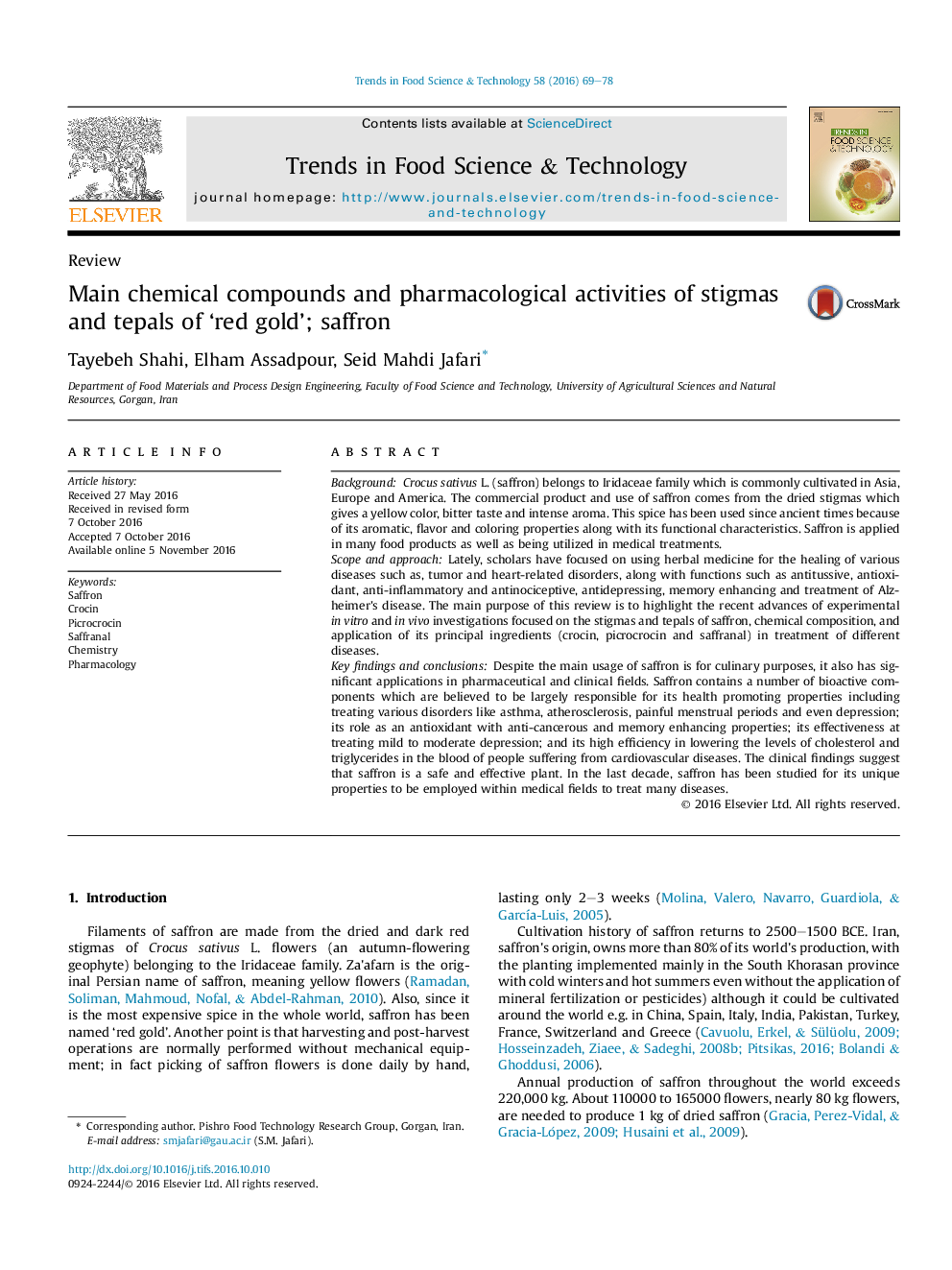| کد مقاله | کد نشریه | سال انتشار | مقاله انگلیسی | نسخه تمام متن |
|---|---|---|---|---|
| 5523809 | 1546121 | 2016 | 10 صفحه PDF | دانلود رایگان |
- Saffron is important due to its pharmacological properties and role in medicine.
- Saffron contains a number of carotenoids which have numerous health benefits.
- Recent studies indicate saffron is an anticancer agent and memory enhancer.
- Saffron helps treating asthma, atherosclerosis, menstrual periods and depression.
- The main chemical components of saffron are crocin, picrocrocin and saffranal.
BackgroundCrocus sativus L. (saffron) belongs to Iridaceae family which is commonly cultivated in Asia, Europe and America. The commercial product and use of saffron comes from the dried stigmas which gives a yellow color, bitter taste and intense aroma. This spice has been used since ancient times because of its aromatic, flavor and coloring properties along with its functional characteristics. Saffron is applied in many food products as well as being utilized in medical treatments.Scope and approachLately, scholars have focused on using herbal medicine for the healing of various diseases such as, tumor and heart-related disorders, along with functions such as antitussive, antioxidant, anti-inflammatory and antinociceptive, antidepressing, memory enhancing and treatment of Alzheimer's disease. The main purpose of this review is to highlight the recent advances of experimental in vitro and in vivo investigations focused on the stigmas and tepals of saffron, chemical composition, and application of its principal ingredients (crocin, picrocrocin and saffranal) in treatment of different diseases.Key findings and conclusionsDespite the main usage of saffron is for culinary purposes, it also has significant applications in pharmaceutical and clinical fields. Saffron contains a number of bioactive components which are believed to be largely responsible for its health promoting properties including treating various disorders like asthma, atherosclerosis, painful menstrual periods and even depression; its role as an antioxidant with anti-cancerous and memory enhancing properties; its effectiveness at treating mild to moderate depression; and its high efficiency in lowering the levels of cholesterol and triglycerides in the blood of people suffering from cardiovascular diseases. The clinical findings suggest that saffron is a safe and effective plant. In the last decade, saffron has been studied for its unique properties to be employed within medical fields to treat many diseases.
Journal: Trends in Food Science & Technology - Volume 58, December 2016, Pages 69-78
